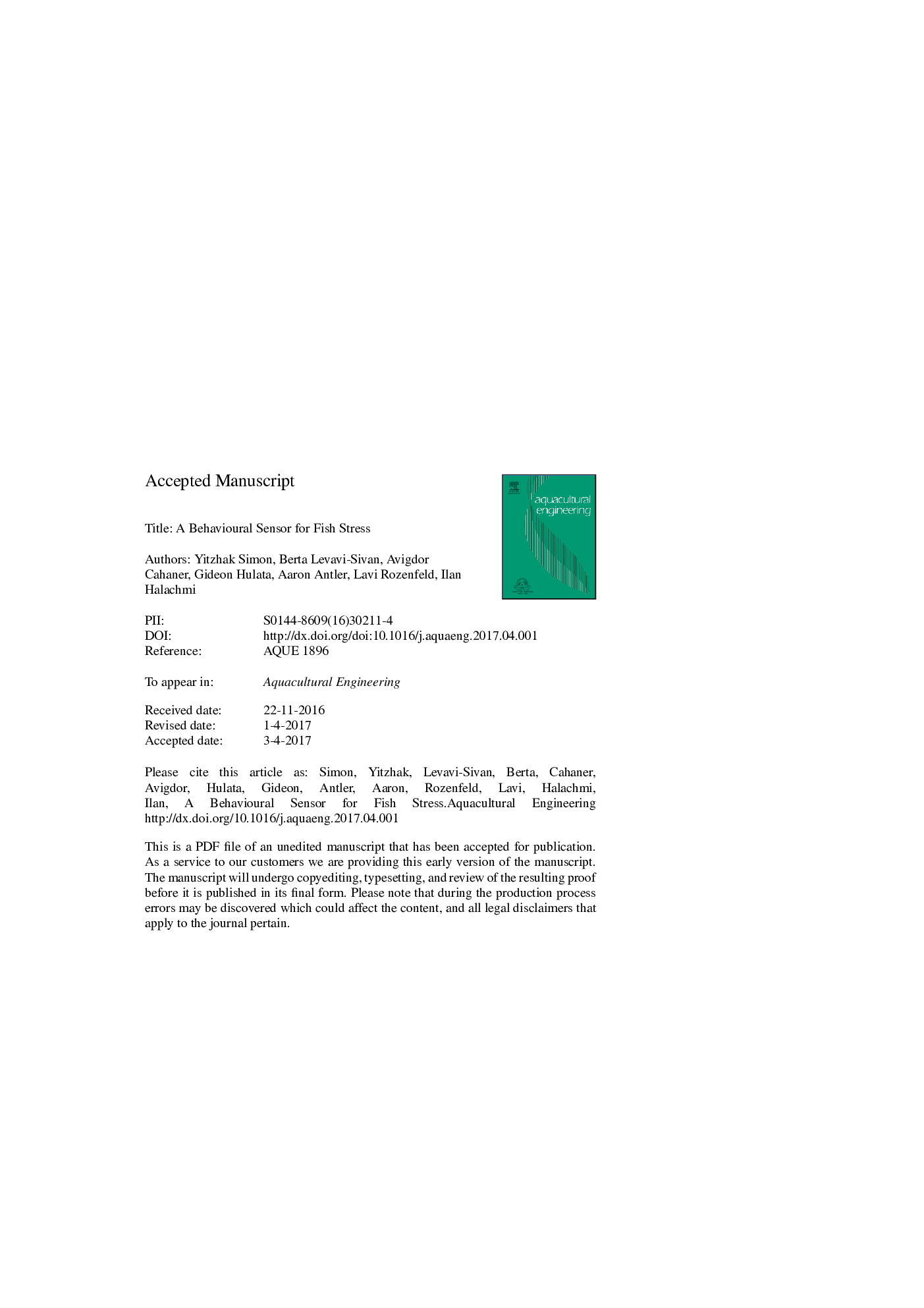| Article ID | Journal | Published Year | Pages | File Type |
|---|---|---|---|---|
| 5763942 | Aquacultural Engineering | 2017 | 18 Pages |
Abstract
Lowering the temperature and oxygen levels both significantly increased the average number of signals identified by the sensor, which indicate stress. The effect of reducing water temperature from 24 °C to 15 °C was three times stronger than was the effect of lowering the oxygen saturation level from 85% to 50%. The difference in the number of signals between the good and stressful conditions was statistically significant, amounting to approximately eight sensor signals, 10.57 compared to 2.49 respectively. Lowering the temperature increased the mean number of signals by 5.85 and 6.06 at 85% and 50% oxygen saturation respectively, whereas lowering oxygen levels increased the mean number of signals by 2.02 and 2.23 at 24 °C and 15 °C, respectively. The results indicate that the stress status of cultured fish can be evaluated using the proposed behavioural sensor. The new sensor may provide an earlier indication of a problem in a fish tank or pond than was heretofore possible. This early warning can enable the fish farmer to take action before many fish are harmed.
Keywords
Related Topics
Life Sciences
Agricultural and Biological Sciences
Aquatic Science
Authors
Yitzhak Simon, Berta Levavi-Sivan, Avigdor Cahaner, Gideon Hulata, Aaron Antler, Lavi Rozenfeld, Ilan Halachmi,
